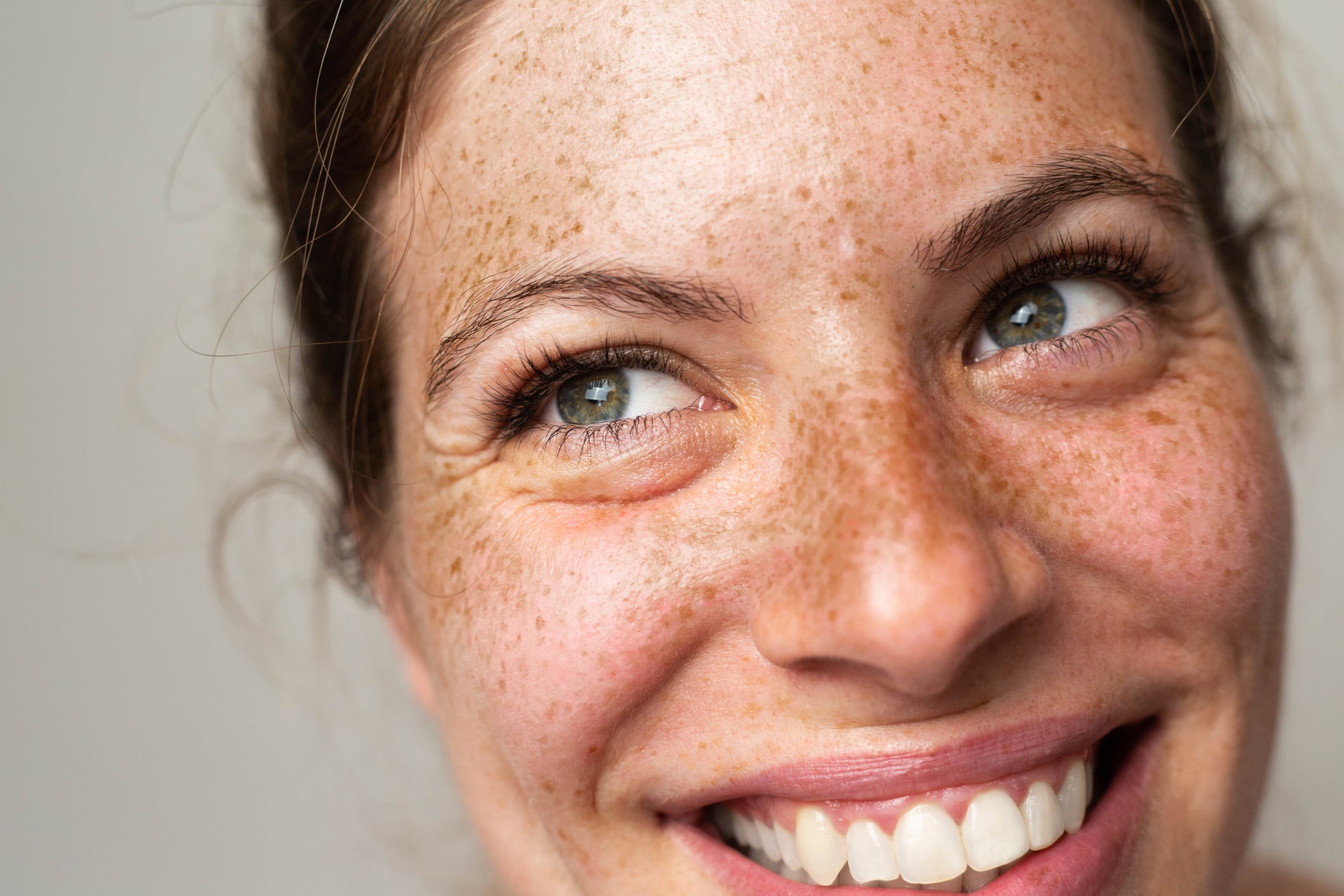Freckles vs Moles: How to Spot the Difference
May 21, 2024 by VitalSkin Dermatology

Freckles and moles have many characteristics in common, but it’s useful to understand what makes them unique. Knowing your skin’s tendency to develop freckles, moles, or both will help you notice any changes and when to talk to your doctor if you suspect anything suspicious.
What’s the Difference Between Moles and Freckles?
Freckles and moles have different causes, colors, and textures, commonly occurring on various areas of the skin. Freckles frequently appear as small, flat brown dots, while moles may be small or large, flat or raised, and brown or black in color.
Neither are dangerous on their own, but both moles and freckles should be carefully monitored. Changes in either could be an early warning sign of skin cancer or other sun damage-related conditions. It’s important to talk to a dermatologist about any freckles or moles you’re concerned about.
How to Identify Freckles vs Moles: Color, Shape, Texture
Freckles are small, brown dots that appear on areas of the skin exposed to sunlight, including the face, chest, shoulders, and arms. They are flat markings that have a smooth texture with no bumps or scales on the skin. There are two main types of freckles: ephelides and solar lentigines. Ephelides are classic freckles that typically appear during childhood, often becoming more pronounced with sun exposure and fading during winter. They are usually small, flat, and uniformly colored.
Solar lentigines, also known as age spots or liver spots, are larger and usually darker than ephelides. They tend to appear on sun-exposed areas of the skin, such as the face, hands, shoulders, and arms as a person ages. Unlike ephelides, solar lentigines do not fade in the absence of sun exposure and are more common in older adults.
Moles tend to be darker than freckles, ranging from brown to black, and can generally appear anywhere on the body. Moles may be flat or raised, so if a mark on your skin is elevated, it’s much more likely to be a mole than a freckle. There are many types of moles each with distinct characteristics.
Congenital moles are present at birth and can range in size from small to large, with larger congenital moles having a slightly higher risk of developing into melanoma. Acquired moles, on the other hand, develop later in life and are typically smaller and benign. Dysplastic or atypical moles are larger and have irregular borders and coloration, carrying a higher risk of becoming cancerous.
Can Freckles Turn into Moles?
Freckles do not turn into moles, but you should speak to a dermatologist about it if you think a freckle has turned into a mole. Changes to moles or a mole’s sudden appearance are good reasons to schedule a skin screening, just in case.
Freckles, Moles, and Sun Exposure
Sunlight’s powerful ultraviolet (UV) radiation can impact the formation of freckles and moles. Sun damage can lead to serious conditions, including cancer. However, many other skin conditions caused by sun exposure are not life-threatening and can be treated with cosmetic treatments.
Are Freckles or Moles Caused by the Sun?
Freckles are caused by the MC1R gene, a gene that is most commonly found in people with a Celtic background. While they are not technically caused by the sun, exposure to sunlight triggers their formation and can darken them.
Moles are irregular clumping formations of melanocytes that can appear due to prolonged sun exposure. Melanocytes are ordinary skin cells that produce melanin and are also responsible for skin tone.
Are Freckles and Moles a Sign of Sun Damage?
Both freckles and moles can appear or increase due to sun exposure. Neither indicates specific sun damage, but freckles can make sun damage more difficult to assess. At the same time, moles with an irregular or changing appearance can be an early sign of cancer or other dangerous skin conditions.
Freckles vs Moles: Treatment Options and Monitoring
Early intervention is key to preventing long-term damage and identifying and treating skin conditions, including cancer. If you notice concerning marks, bumps, or discoloration, make an appointment with a dermatologist to have them examined.
Monitoring Freckles and Moles
For moles, look for changes in existing moles or the development of new ones. Keep an eye out for moles that develop asymmetry, irregular borders, or irregular color. It’s important to get moles checked by a professional if they develop suddenly, change rapidly, cause discomfort, have an uneven or scaly appearance, or if you have a family history of skin cancer or melanoma. While freckles are considered benign, their appearance can hide sun damage. Pay special attention to areas where freckles appear and watch for any changes.
Treatment Options for Freckles vs. Moles
At-home treatments for reducing the appearance of freckles include exfoliation, moisturizing, and wearing SPF each day. Cosmetic dermatology procedures, including laser treatments and chemical peels, can also help fade freckles by removing dead skin. While these procedures are more expensive than at-home treatments, they are more efficient and effective.
The treatment options for moles depend on the reason for treating the condition, which can be for appearance, comfort, or to test for other conditions. Your doctor may want to perform a skin biopsy or a mole and skin cancer screening to determine if a mole is cancerous. Surgery, laser therapy, and topical treatments are all options your doctor might recommend for removing a mole.
If you are interested in improving the appearance of freckles or moles or are concerned about a suspicious mole, our team of board-certified dermatologists is here to help. At VitalSkin, we pride ourselves on accurate, early detection of cancerous sunspots and skin growths. Schedule an appointment at one of our dermatology clinics today.

